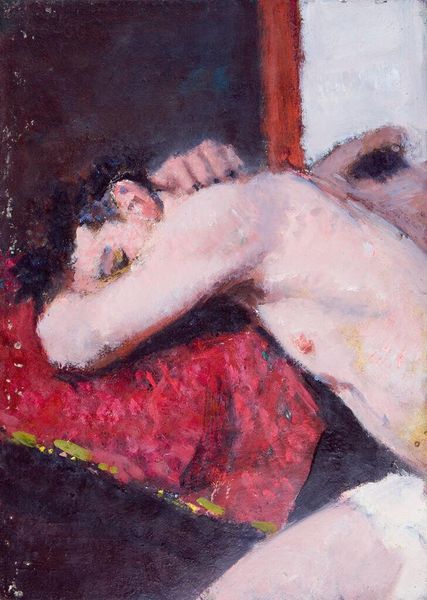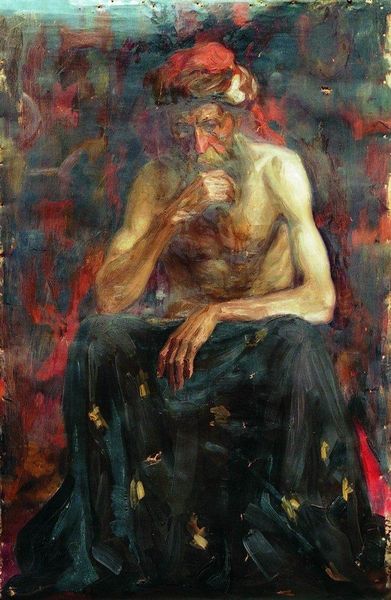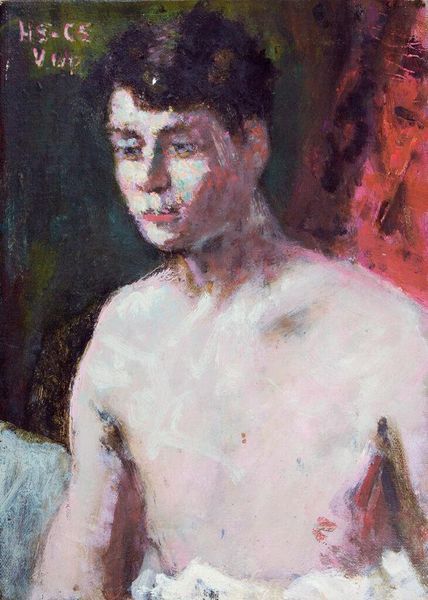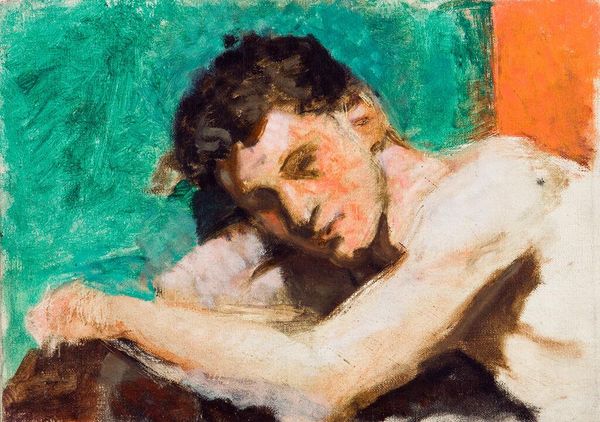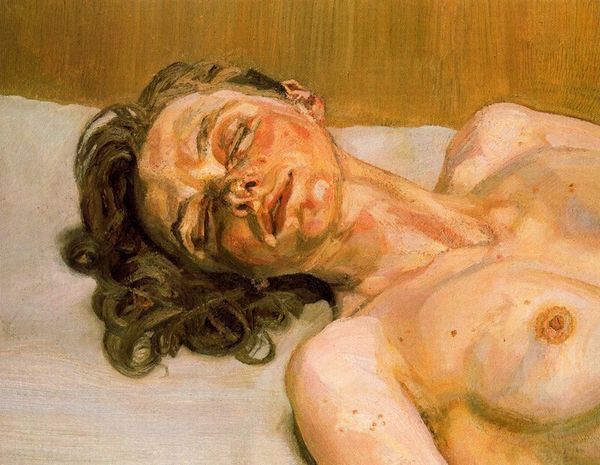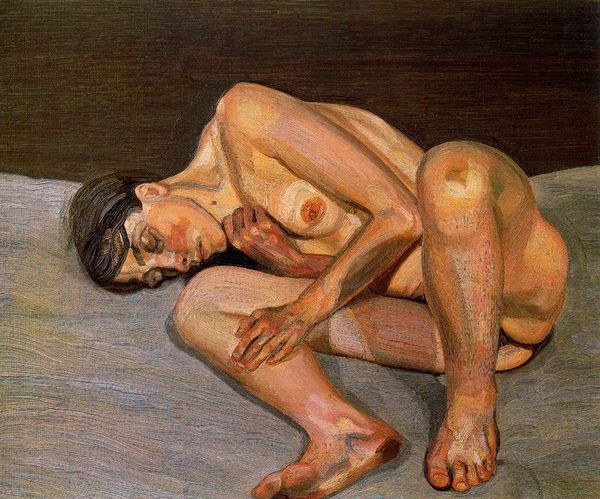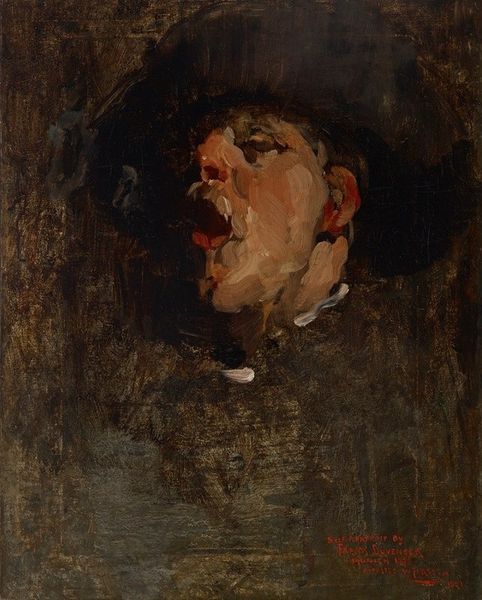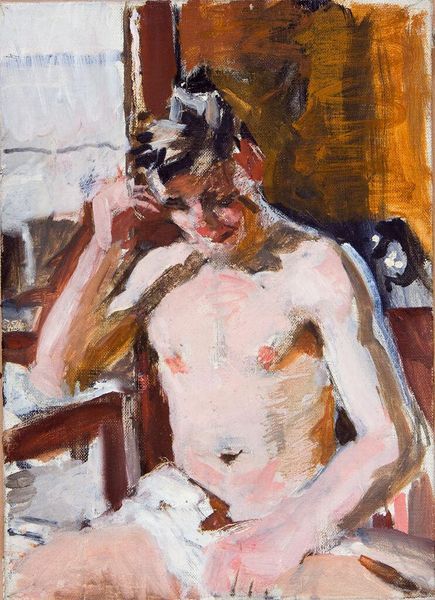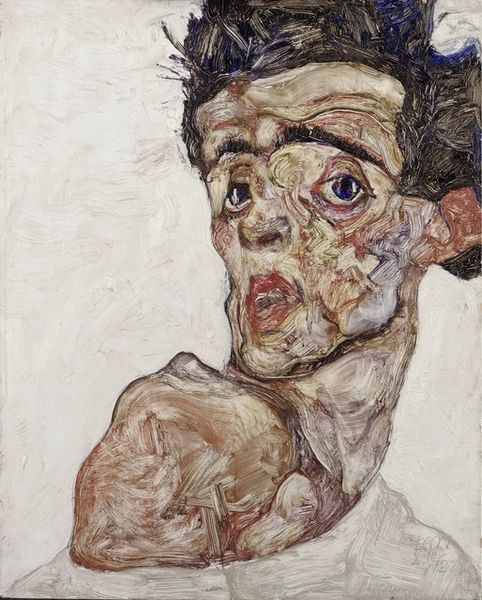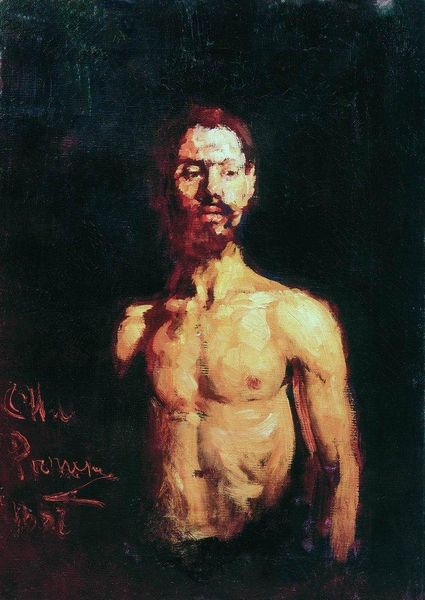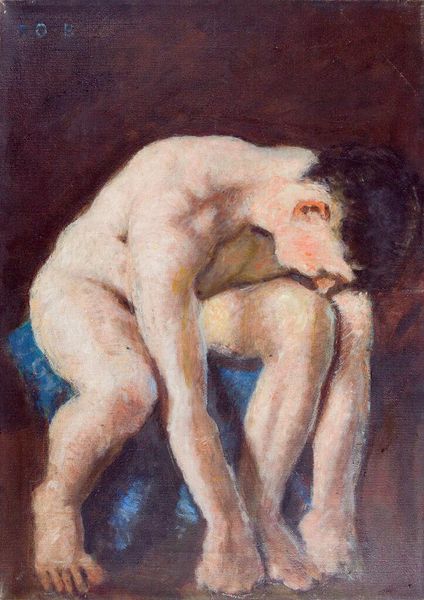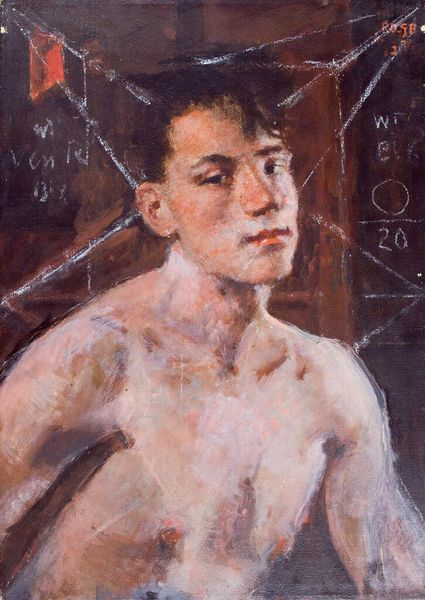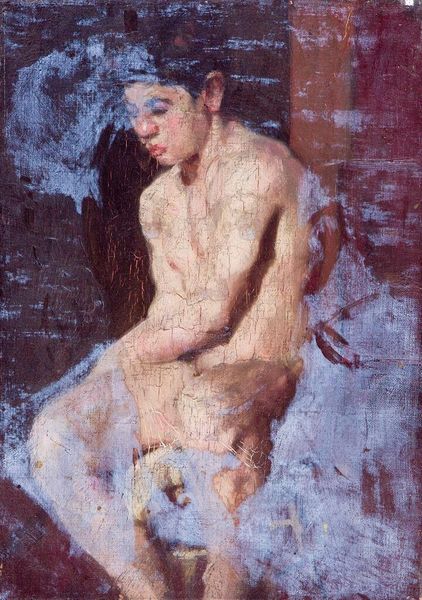
painting, oil-paint
#
portrait
#
painting
#
oil-paint
#
figuration
#
oil painting
#
expressionism
#
history-painting
#
expressionist
Dimensions: 40 x 50 cm
Copyright: Public domain
Curator: At first glance, this painting strikes me as viscerally unsettling. The rough brushstrokes, the unnatural flesh tones... there's a rawness to it. Editor: That’s Ilya Repin’s “Wounded Man,” painted in 1913. It's currently housed in the Tretyakov Gallery in Moscow. Repin was a giant of Russian realism, but here he seems to be exploring a much more expressionistic style. Curator: Expressionistic indeed. The stark red background, almost blood-like, dominates the composition. What symbolic weight might that hold? Editor: Red, of course, is primal—life, passion, violence. The way it encircles the figure suggests not just physical wounding but also a profound existential distress. There's also something reminiscent of the shroud of Christ, or the death of Marat. It invites a contemplation of sacrifice and suffering. Curator: It’s intriguing to view this through the lens of historical context. Painted on the eve of World War One, could it be interpreted as a premonition, a visceral response to the impending catastrophe? Was this exhibited, made public during that time? Editor: Repin withdrew from the public eye to his estate in Finland as war broke out, making it harder to interpret reception, or Repin's intention for it as a public work. However, he was profoundly affected by the societal disruptions around him. That’s absolutely pertinent, it's likely that his concern about that time influenced his exploration into the human suffering. It feels like he’s abandoned the detailed realism he was known for, in favor of portraying inner turmoil. Curator: And the wound itself… It’s almost gestural, quickly rendered, yet so impactful. Editor: Visually it speaks of immediate and catastrophic suffering. Considering how ubiquitous imagery about the suffering of man has been through history, what strikes me here, it the loss of any historical markers—it's simply 'the wounded man,' timeless in his suffering. Curator: The politics of trauma made visible. Thank you. That gives me much to consider regarding the societal role and weight carried within the work. Editor: It makes one think differently about universal visual stories of hurt, loss and survival, for sure.
Comments
No comments
Be the first to comment and join the conversation on the ultimate creative platform.
